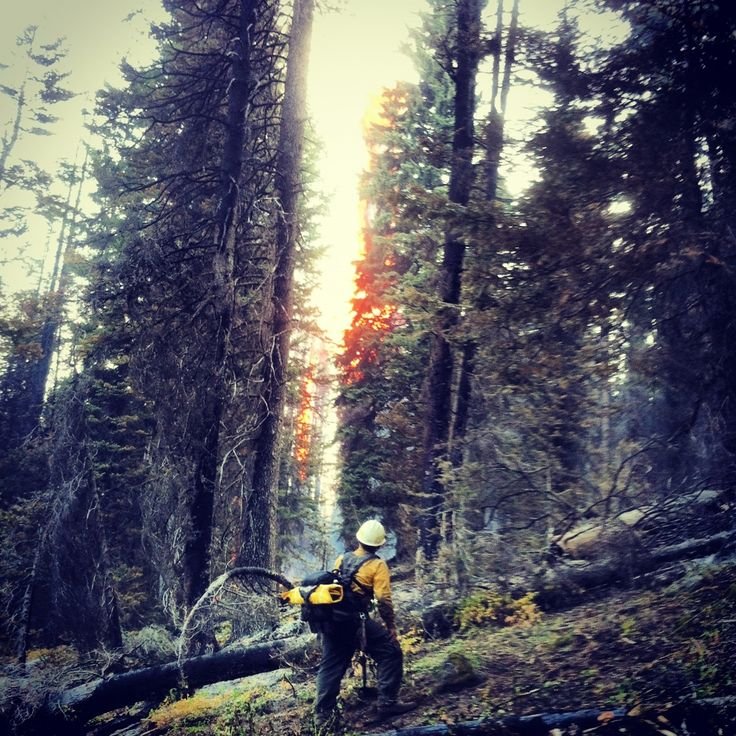A Shocking Attack in the Line of Duty
In a tragic and unprecedented incident, two Idaho firefighters lost their lives in an ambush while responding to a wildfire on the outskirts of a rural mountain community. The attack, which unfolded on a quiet Sunday afternoon, has stunned residents, shocked emergency response communities nationwide, and raised serious concerns about the safety of first responders who work in increasingly dangerous environments.
Authorities have now identified the suspect responsible for the attack as a 20-year-old man who lived in the area. His motivations remain unclear, but law enforcement officials believe the attack was premeditated, with evidence pointing toward a calculated plan to lure responders into a deadly trap.
The Ambush: What Happened on Canfield Mountain
The incident occurred when a crew of firefighters was dispatched to a small but suspicious wildfire reported on the remote slope of Canfield Mountain, near the town of Coeur d’Alene. Shortly after arriving at the scene and beginning suppression efforts, the crew came under sudden gunfire from a hidden location nearby.
The gunman, armed with a high-powered rifle, began firing at the unsuspecting responders from an elevated, wooded position. The attack was swift and precise—two firefighters were fatally struck before they could take cover. A third member of the crew was seriously injured but survived due to immediate emergency evacuation and trauma care.
The chaotic scene quickly escalated into a law enforcement emergency as police, tactical units, and federal agents rushed to secure the area, which was challenging due to the rugged terrain and ongoing wildfire.
The Suspect: A Troubled Young Man
Investigators have identified the assailant as a 20-year-old man who had recently relocated to the region. Neighbors described him as quiet and reclusive, often seen hiking alone in the nearby hills. While he had no prior criminal record, early investigations suggest a growing interest in firearms and a recent pattern of antisocial behavior.
Authorities suspect he may have deliberately set the fire as bait, using it to draw first responders to the remote location before launching his ambush. He was later found deceased near the site of the attack, with the rifle believed to have been used in the shooting nearby. It remains under investigation whether he died by suicide or as a result of return fire from law enforcement.
Emergency Response and Lockdown Measures
As the shooting unfolded, emergency services initiated a large-scale response. Helicopters circled overhead, snipers were deployed to monitor for additional threats, and tactical teams combed the woods to ensure there were no accomplices or further dangers in the area.
A shelter-in-place order was issued for nearby residents, and several rural roads were closed off for hours as law enforcement secured the perimeter. Firefighters were pulled back until the area could be declared safe, delaying wildfire containment and raising concerns about how public safety emergencies can be exploited for violent acts.
Grief and Mourning in the Community
The small mountain town and surrounding communities were plunged into mourning following confirmation of the two firefighter deaths. Local officials described the loss as “deeply personal” to the area, where first responders are not just professionals—they are neighbors, friends, and family members.
Spontaneous memorials appeared outside fire stations and city buildings. Residents gathered for candlelight vigils, lining roads with flags and tributes. Motorcades transporting the fallen firefighters passed through town, greeted by silent salutes and displays of solidarity.
The emotional weight of the event has been compounded by its nature—a planned, violent ambush on individuals who had come only to help and protect.
Official Statements and Condolences
Local and state officials have offered statements of condolence and outrage. The governor called the attack a “heinous and cowardly assault” on public servants and ordered all flags in the state to be flown at half-staff in honor of the fallen.
Law enforcement leaders expressed their deep sorrow and vowed to conduct a full investigation to uncover the suspect’s motives and any possible influences or affiliations. Fire department leadership emphasized their commitment to continuing their mission, stating that while they are grieving, they remain ready to serve.
Public figures across the political spectrum condemned the violence, with some calling for better protection for firefighters and emergency personnel, especially those responding in isolated or high-risk locations.
A Complicated Motive
As investigators dig deeper into the background of the suspect, a complex picture is emerging. Preliminary information indicates that he had aspirations of joining a firefighting unit in the past, having even worked briefly in a related field. However, something appeared to have changed in recent months, with signs of emotional distress, isolation, and a potential obsession with weapons.
Mental health professionals are being consulted to explore whether untreated psychological conditions may have contributed to his actions. At the same time, investigators are reviewing digital records, communications, and any materials that might provide insight into his planning or intent.
While no clear motive has yet been confirmed, authorities are treating the act as an intentional, targeted ambush—one that may have been motivated by personal grievances, delusional ideologies, or a broader desire to inflict harm.
Questions About Firefighter Safety
The incident has sparked renewed discussion nationwide about the safety and security of firefighters, particularly those who respond to remote wildfires or work in sparsely populated areas. Many emergency responders operate with minimal backup in unpredictable conditions, relying heavily on the assumption of good faith from the public they serve.
Fire departments and union representatives are now asking whether more needs to be done to safeguard personnel from intentional harm. Proposals include better situational training, remote surveillance support for suspicious calls, and closer coordination with law enforcement before entering high-risk areas.
There is also a push for increased mental health support—not only for the survivors of such traumatic events but for those working in emergency services more broadly.
Honoring the Fallen Heroes
The names of the two firefighters have not yet been publicly released, pending notification of family. However, early tributes from colleagues have painted a picture of dedicated, brave individuals who gave their lives in service to others.
One was a seasoned firefighter with over a decade of experience; the other was reportedly a newer recruit full of energy and commitment. Their sacrifice has become a rallying point for firefighters across the country, with departments in multiple states holding moments of silence and organizing memorial fundraisers to support the victims’ families.
Memorial services are expected to draw large crowds of mourners, including public officials, emergency responders, and community members united in grief and resolve.
Moving Forward: Healing and Resilience
While the investigation continues, the community is focused on healing. Counseling services have been made available for both firefighters and residents affected by the attack. Local churches and civic groups are organizing remembrance events, and schools have offered support programs for students coping with the news.
The tragedy has reminded many of the dangerous and unpredictable nature of emergency work. But it has also underscored the courage, commitment, and selflessness of those who choose to step into harm’s way.
As the region mourns its loss, there is also a strong sense of resilience—a collective vow to stand by its heroes and ensure their sacrifice is never forgotten.
Conclusion: A Sobering Wake-Up Call
The deadly ambush that took the lives of two Idaho firefighters serves as a grim reminder of the risks first responders face daily. It highlights the potential for violence even in acts of service and the need for ongoing vigilance, support, and protection.
While the community will need time to process and heal, this tragedy has already sparked important conversations about mental health, emergency preparedness, and the fundamental respect owed to those who dedicate their lives to the safety and well-being of others.
The suspect may never answer for his actions, but the response to this horrific event—from investigators, neighbors, and colleagues alike—reflects a deep and unwavering respect for the fallen, and a determination to prevent such acts from ever happening again.


